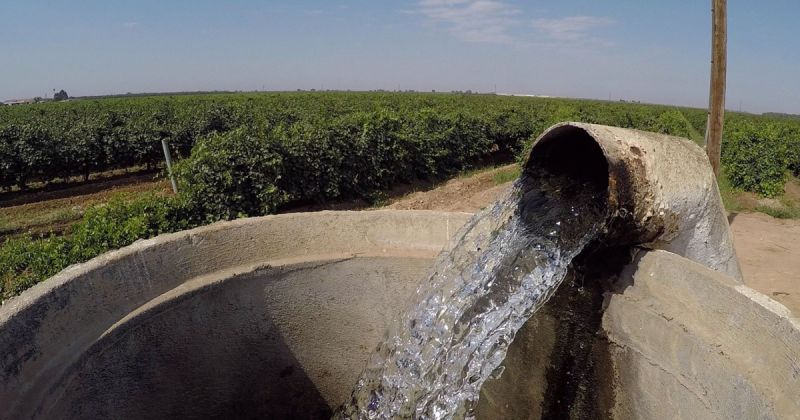(Ground) Water Crisis in Bangladesh
Published on by Water Network Research, Official research team of The Water Network in Academic
A new paper by the University of Delaware reveals that overpumping of groundwater in Dhaka, Bangladesh, may have unforeseen consequences for communities outside the city center.
 With a population of over 15 million people, Dhaka — the capital of Bangladesh — is considered a megacity and shares many of the water management problems common to other major cities.
With a population of over 15 million people, Dhaka — the capital of Bangladesh — is considered a megacity and shares many of the water management problems common to other major cities.
While efforts are made to sustain water quantity and quality in city water supplies, Dhaka pumping has caused groundwater levels to drop more than 200 feet over the last 50 years and these levels continue to decline at a rate of up to 9 feet per year.
An often-overlooked consequence of these actions in mega-cities is the associated effect on the water quality and supply to surrounding peri-urban or rural communities, where water resources are stressed and surface pollution from toxic metals, organic materials and other pollutants, is widespread.
This is particularly problematic in Bangladesh, where naturally occurring arsenic in shallow (less than 200 feet) groundwater threatens the health of tens of millions of people. High levels of arsenic exist in areas surrounding Dhaka, and there people use deep (greater than 500 feet) groundwater, which is low in arsenic.
Khan and Michael’s work shows that even in water-rich systems like those in the Bengal Basin, pumping to supply water to mega-cities can threaten regional groundwater resources by inducing fast transport of the contaminants, specifically arsenic, a known carcinogen, to deeper areas of the aquifer, even outside the city limits where it can contaminate deep wells used for arsenic mitigation.
“It is an environmental justice problem because the people who benefit from the city water supply are not the people whose wells are at-risk of contamination – arsenic contamination only exists outside of the city. There, if a community’s well becomes contaminated because of what’s happening in Dhaka, they may not have another source of safe water,” said Michael, Unidel Fraser Russell Chair for the Environment and associate professor of geology, which is housed in the College of Earth, Ocean, and Environment.
Understanding how groundwater moves
Regional groundwater models tend to use parameters that generalize how water moves through the subsurface, incorporating only larger-scale geologic structure, rather than the small-scale details of the geology of a city or region they are studying.
In their study, Michael and her colleagues modeled the geology of Dhaka using detailed subsurface measurements, and then applied strong pumping mechanism to the model to mimic the current Dhaka pumping.
The researchers found that when there is strong pumping and heterogeneity in the underground sediments like those found in a Delta – it affects the overall hydrology of the area.
“Essentially, the pumping causes faster groundwater flow than normal because it quickly draws the water into massive city pumps deep in the aquifer. This hydrologic change can force shallow groundwater, where arsenic is found, to migrate downward at a much faster rate, even outside of the city where the pumps are located,” said Michael, who has studied groundwater issues in Bangladesh since 2004.
But what is heterogeneity?
 Aquifers, Michael explained, are created when geological sediments like sands and clays are naturally deposited over time.
Aquifers, Michael explained, are created when geological sediments like sands and clays are naturally deposited over time.
Heterogeneity refers to the way sand and clay is oriented underground, in the aquifer’s subsurface, and is critical to how contaminants move in groundwater.
In Delaware, the geological sediment layers tend to be much longer and thicker, sloping toward the sea.
They are fairly consistent, meaning that water from multiple aquifers is generally separated and it is less likely that contamination will spread from one to another.
In a delta system like Bangladesh, however, the clay layers are chopped up, allowing water to move in unpredictable ways and creating uncertainty about whether placing a well underneath a clay layer will protect it from contamination.
While Dhaka city is known to be free from arsenic contamination because of its unique geology, outside of Dhaka the known-carcinogen is everywhere.
If pumping in Dhaka’s altered groundwater system continues at current levels, the researchers theorize that some wells outside the city center could become contaminated sooner than previously thought; within decades to centuries depending on the geochemical effects on arsenic transport through aquifer sediments. Another problem is that Dhaka pumping creates low water levels, which could compromise operation of handpumps well beyond the city center.
Complicating matters, arsenic is tasteless, odorless and colorless, and can be detected in water only through testing. Communities outside the city center with deep wells, which are typically thought of as low in arsenic, may not realize their water is unsafe.
Source: University of Delaware
Read full paper here
Media
Taxonomy
- Groundwater
- Water Resources
- Urban Water Supply
- Hydrology
- Groundwater Mapping
- Groundwater Resource